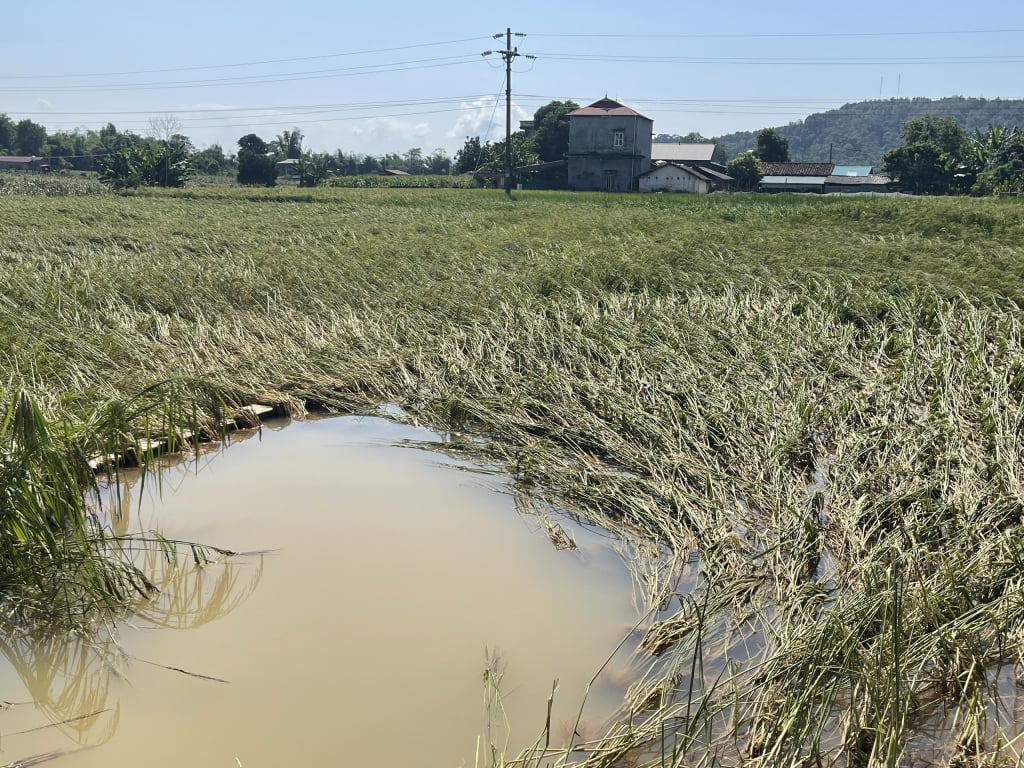
Ms. Dam Thi Hiep, Na Teng hamlet, Hoa An commune, with a sorrowful look, looked at the entire summer-autumn rice field that was collapsed, flooded with mud and at risk of being lost due to the impact of storm No. 11. Her voice was filled with sadness as she confided: In previous years, during the rainy season, the crop area was only flooded for 1-2 days before the water receded, but this year, in 1 week, the crop area (including rice, corn, and vegetables) was flooded twice, and the recent flooding caused heavy damage to crops right at the time when the rice was in the flowering stage, so the plants could not recover.
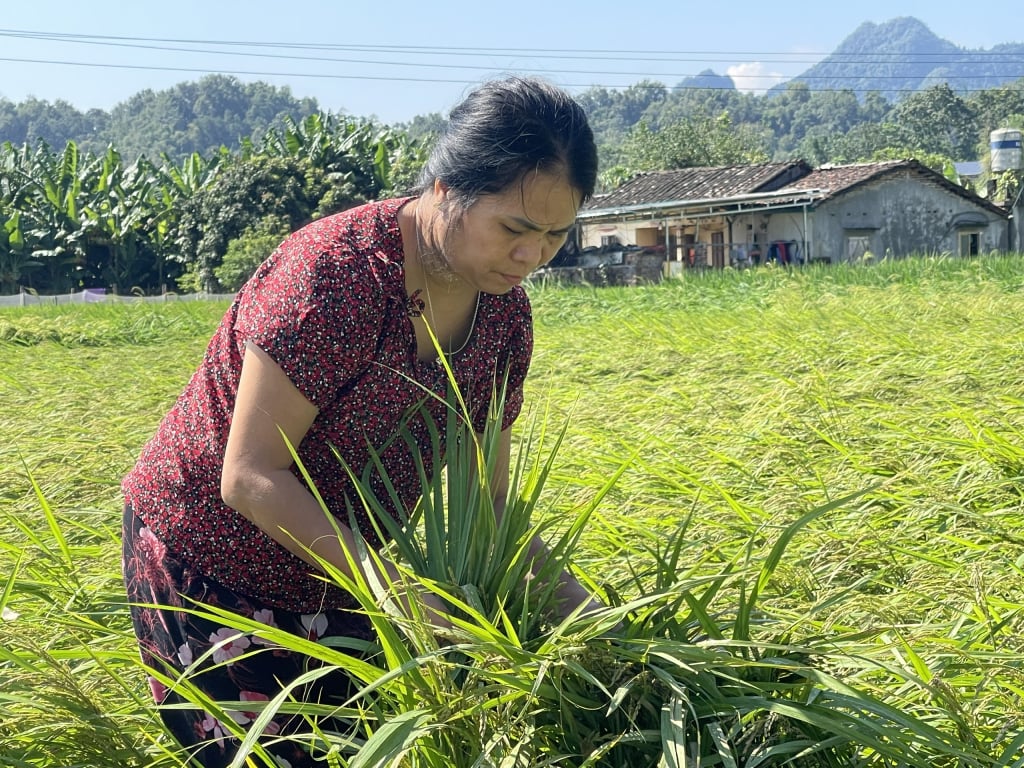
This year, her family planted more than 1,800 square meters of rice, 2,000 hectares of corn, and vegetables, all of which were broken and deeply flooded, with the risk of losing all of the family's crops. During this flood, the estimated damage caused by natural disasters to household goods and crop areas is over 200 million VND.
Head of Na Teng hamlet (Hoa An commune) Ban Duc Thien shared: Currently, the entire Na Teng hamlet has over 42.65 hectares of flooded rice and crops, mainly concentrated in riverbank areas, low-lying areas, and areas without drainage. Of these, more than 30 hectares are at risk of total loss; the number that can recover is only about 2%, this year's rice crop is at risk of reduced productivity and output.
Ms. Chu Phuong Thanh, Vice Chairman of the People's Committee of Hoa An commune, said: Due to the impact of the circulation of storm No. 11, heavy rains caused material damage and agricultural production in the locality. The entire Hoa An commune has 8,609 hectares of agricultural land, of which over 380 hectares of rice and crops were damaged, most concentrated in the hamlets: Ma Quan, Be Trieu, Na Teng, Na Me, Thai Cuong... Faced with the above situation, the commune's Party Committee and authorities directed the agricultural extension team and hamlets to urgently count the damaged area; propagate and mobilize people to increase field visits, focus on overcoming the lightly affected areas such as erecting fallen rice plants, draining water, clearing the flow to prevent prolonged flooding; classifying the flooded rice areas to have timely remedial measures. At the same time, for the completely lost areas, the commune propagated and mobilized people to actively improve the soil, and plant early winter vegetables to replace them.
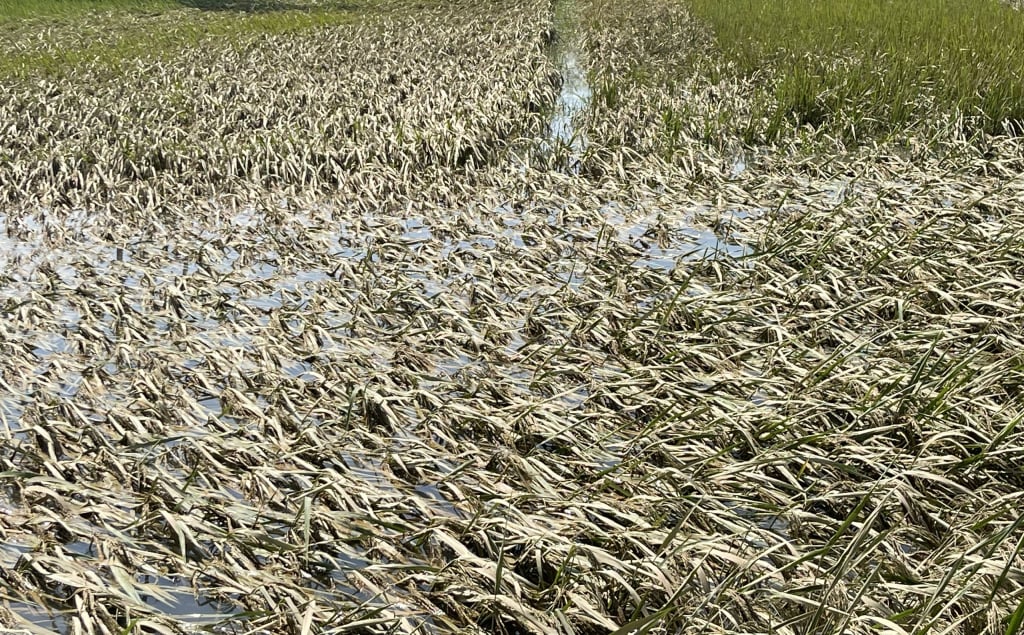
In Nung Tri Cao ward, due to the direct impact of storm No. 11, many properties were damaged, people's houses were deeply flooded, causing damage and great loss to agricultural production in the area. Especially the majority of agricultural production area near Bang river and Cun stream, so the entire area of crops and flowers from group 4 to group 30 was damaged, over 70% of the area of crops and flowers. Specifically, the rice area was over 280 hectares; corn 70 hectares; vegetables 20 hectares; fruit trees 10 hectares...
Chairman of Nung Tri Ward People's Committee Cao Hoang Hung Vy said: Currently, along with the work of calculating the damage, the local Party Committee and government are actively implementing remedial measures; continuing to organize inspections, reviews, statistics, and specific assessments of the extent of damage to agriculture, applying mechanisms and policies to support people to restore agricultural production according to regulations. For areas that are damaged and cannot be repaired, people are instructed to proactively prepare land to convert to growing suitable crops.
According to statistics from the Department of Agriculture and Rural Development, due to the impact of storm No. 11, the whole province had over 5,037 hectares of rice and crops flooded, broken and buried. Of which, 2,364 hectares of rice were damaged; 2,673 hectares of crops were damaged; 553 hectares of annual crops (canna, beans, etc.) were flooded; 150 hectares of perennial crops (bamboo, star anise, cinnamon, etc.) were buried by landslides; 130 hectares of fruit trees were flooded.
Faced with the impact of floods, the Department of Agriculture and Rural Development established an inspection team to assess the extent of damage in key areas. It is recommended that localities proactively propagate and mobilize people to increase field sanitation and pay attention to drainage. For areas that are slightly affected, the team will guide people on how to care for and increase fertilization, helping crops recover quickly. Particularly for areas growing crops that are affected, it is recommended that people urgently prepare soil, prepare seeds for replanting, prioritize planting leafy vegetables, short-term fruits and vegetables, spices, and water-loving plants to soon have products to supply to the market. Continue to effectively use resources from national target programs to support plants and breeds, organize training courses to transfer science and technology to farmers. Have policies to promptly support funding for severely affected households to ensure social security and restore production.
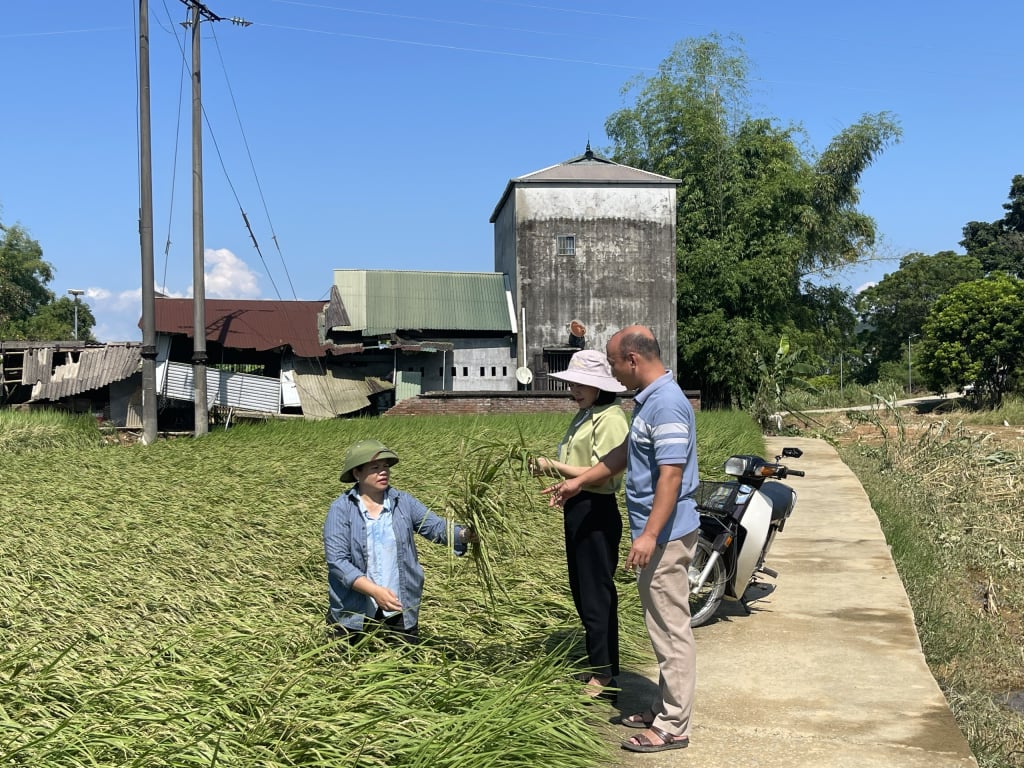
Ms. Doan Thi Thuan, Acting Head of the Department of Crop Production (Department of Agriculture and Environment) said: To overcome the consequences of natural disasters and compensate for lost output. For rice and crops, people need to take advantage of favorable weather to quickly harvest early-season rice. Localities mobilize people to mobilize all resources, clear the flow to avoid long-term flooding, creating conditions for dry fields. For flooded rice and crop areas that cannot be repaired, it is necessary to clean the fields. In particular, depending on the conditions of the region, promote propaganda and guidance to mobilize people to prepare land to switch to winter crops such as: sweet potatoes, potatoes, tobacco and vegetables of all kinds... contributing to increasing the value of agricultural production and compensating for the shortage of food output caused by storms No. 10 and 11. At the same time, farmers need to proactively check their fields regularly, promptly detect and proactively prevent some common pests and diseases to ensure crop productivity to ensure local food security.
Source: https://baocaobang.vn/chu-dong-khoi-phuc-san-xuat-nong-nghiep-sau-con-bao-so-11-3181145.html


![[Photo] General Secretary To Lam visits Kieng Sang Kindergarten and the classroom named after Uncle Ho](https://vphoto.vietnam.vn/thumb/1200x675/vietnam/resource/IMAGE/2025/10/09/1760023999336_vna-potal-tong-bi-thu-to-lam-tham-truong-mau-giao-kieng-sang-va-lop-hoc-mang-ten-bac-ho-8328675-277-jpg.webp)
![[Photo] Prime Minister Pham Minh Chinh chairs a meeting of the Government Standing Committee on overcoming the consequences of natural disasters after storm No. 11](https://vphoto.vietnam.vn/thumb/1200x675/vietnam/resource/IMAGE/2025/10/09/1759997894015_dsc-0591-jpg.webp)
![[Photo] President Luong Cuong attends the 80th Anniversary of the Traditional Day of Vietnamese Lawyers](https://vphoto.vietnam.vn/thumb/1200x675/vietnam/resource/IMAGE/2025/10/09/1760026998213_ndo_br_1-jpg.webp)









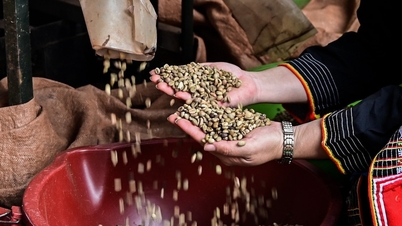








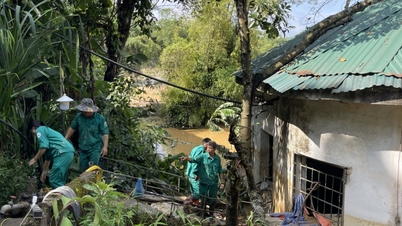









































































Comment (0)